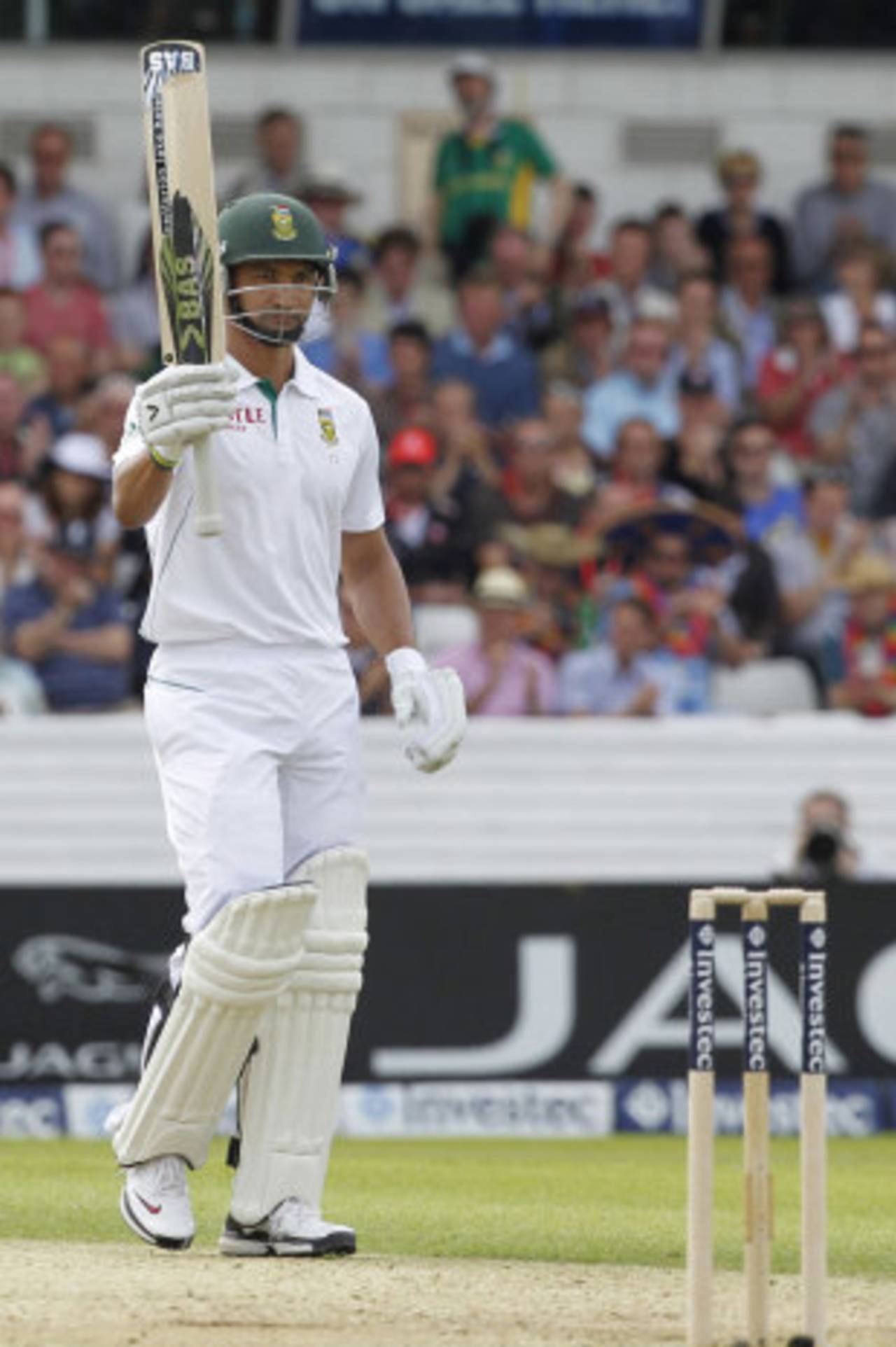How different it would have been if
Alviro Petersen's edge off the third ball of the morning had gone to either third slip or gully and not the space in between them. He would have been out for second successive duck in the series and the gorgeous cover drive he played five overs later would never have made its appearance.
How different it would have been if there had been a third slip when Petersen next edged in the 11th over. A catchable chance went to the boundary instead of to hand.
And how different it would have been had Alastair Cook held on at second slip two balls later, or had Graeme Swann not been dropped and could have taken his usual position. Then Petersen would have been out for 29 and would likely have been criticised for attacking too early instead of being watchful.
But none of those things happened.
Instead, Petersen went on to record his fourth Test century in 15 matches and proved, once again, that pressure is his best trigger. That he was under pressure at all can only be gleaned from perception, not fact.
Having not announced himself on the tour of England, Petersen was written up as being the weak link. He totalled 42 runs in four innings since the squad's arrival on July 6, less than any of the other batsmen including Jacques Rudolph and JP Duminy, who did not get the opportunity to bat in the first Test. His duck in that Test throbbed in its neon obviousness that he had failed to cash in against conditions and an attack that others had feasted on.
The reality is that Petersen had scored a hundred in the Test before the tour of England and was in no danger of losing his place. He was also not facing the chop when he scored his 156 in
Wellington in March, having registered a century three matches before against Sri Lanka in
Cape Town in January.
Why Petersen always comes under scrutiny could have more to do with the people he bats with than who he is on his own. Four of South Africa's top five are ranked in top ten Test batsmen by the ICC. Guess who is not?
Graeme Smith, Hashim Amla, Jacques Kallis and AB de Villiers have all scored runs in enough places for their positions not to come into question. They are the spine of South Africa's line-up and it is easy to forget that for that spine to function properly, it needs all its vertebrae.
Over the last few years, many different batsmen have been asked to slot in alongside the bigger names. Neil McKenzie did to acclaim for a while, Boeta Dippenaar never really fused with Smith the way he should have and although Ashwell Prince could do it, he simply did not want to play in that position. Unlike Matthew Hayden, Smith has never found his Justin Langer. The closest he came to that was Herschelle Gibbs and since the maverick opener's retirement, no-one has really been able to call themselves his replacement.
Petersen has showed that the ocean floor is a lot lower than England thought and South Africa's depth is multi-layered.
Batting with the ghost of opening batsmen of the past may have placed a subconscious burden on Petersen, especially when he was dropped after nine Tests having not done much wrong. Jacques Rudolph's prolific form at Yorkshire and then the Titans forced his way back into the international game and the only way to include him in the starting XI at the time was to do away with Petersen. Ironic then, that Petersen has taken a big step to cementing his own position at the same ground which revitalised Rudolph's career.
What Petersen also showed is that the ocean floor is a lot lower than England may have thought and South Africa's depth is multi-layered. He outbatted Graeme Smith to reach his first fifty in 78 balls. Despite the chances he gave and the number of times he played and missed, Petersen's confidence did not appear to dip. He dug in and no matter how many times the ball beat his bat, he did not shy away.
When England bowled the wrong line on his legs, he took advantage on his favoured on-side. When the short ball came, he pulled, twice to bring up his fifty and again to raise the hundred. In between that, he ground it out, particularly after lunch when England found an extra gear. Run scoring became almost as rare as England wickets, especially as Petersen eked over the 80s and into the 90s but his temperament remained solid.
"He paced his innings so well," AB de Villiers, who was with him when the century came up, said. "I found it really difficult out there for my 40-odd and he supported me. The way he played was inspiring."
If De Villiers found it difficult to face 107 balls, Petersen's struggle can only have been magnified. He spent 266 balls at the crease in an all-day effort that was about batting ugly to usher the team through, not batting beautifully for personal glory. Convincing shots were not in abundance as he contended with old-fashioned line and length but hard fought ones were. Even right at the end of the day, Petersen did not look entirely control but until the last two wickets fell, he made sure South Africa were.
Firdose Moonda is ESPNcricinfo's South Africa correspondent
